Select Language
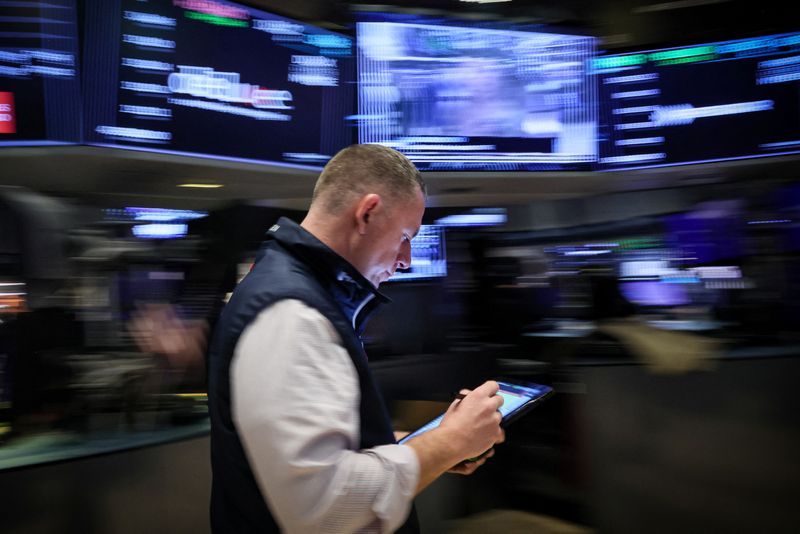
By Caroline Valetkevitch
NEW YORK (Reuters) -U.S. stocks ended sharply higher on Tuesday, with the S&P 500 registering a record high close as Oracle (NYSE:ORCL) shares surged and consumer price data failed to dampen investors' hopes of interest rate cuts in the coming months.
Shares of Oracle jumped 11.7% and reached a record high, a day after it reported upbeat quarterly results and said it is set to make a joint announcement with artificial intelligence chip giant Nvidia (NASDAQ:NVDA).
Nvidia shares gained 7.2% and an index of semiconductors rose 2.1% and snapped a two-day losing streak.
The Labor Department reported that the Consumer Price Index (CPI) rose 0.4% last month after climbing 0.3% in January. Excluding volatile food and energy components, consumer prices increased 0.4% in February after rising by the same margin in January.
"Investors have gotten comfortable with the notion that it's not about when the Fed will lower rates but rather by how much, and a delay - whether it happens in May like many were initially hoping or in September - ultimately doesn't matter," said Oliver Pursche, senior vice president and advisor for Wealthspire Advisors in Westport, Connecticut.
"It's that they will and that a less restrictive environment is coming."
Traders now see a 70% chance of the first rate cut coming in June, the CME FedWatch Tool showed, versus 71% ahead of the inflation report.
The Dow Jones Industrial Average rose 235.74 points, or 0.61%, to 39,005.4. The S&P 500 gained 57.3 points, or 1.12%, at 5,175.24 and the Nasdaq Composite added 246.36 points, or 1.54%, at 16,265.64.
"If you look at economic data, it continues to be pretty strong," Pursche added. "And from my perspective as a consumer, employee and investor, I'd rather have a strong economy and slightly elevated interest rates than a weak economy that requires stimulus."
Producer price data is due later this week.
On the downside, shares of Boeing (NYSE:BA) fell 4.3%. Boeing told employees in a memo on Tuesday it is adding weekly compliance checks for every 737 factory work area and additional audits of equipment to reduce quality problems.
The U.S. Federal Aviation Administration has curbed Boeing production following the mid-air panel blowout on a new Alaska Airlines (N:ALK) 737 MAX 9 jet on Jan. 5.
Also, U.S. carriers warned that their plans to increase capacity were in doubt due to jet delivery delays from Boeing.
Shares of Southwest Airlines (NYSE:LUV) were down 14.9%.
Volume on U.S. exchanges was 10.97 billion shares, compared with the 12.07 billion average for the full session over the last 20 trading days.
Advancing issues outnumbered decliners on the NYSE by a 1.28-to-1 ratio; on Nasdaq, a 1.20-to-1 ratio favored decliners.
The S&P 500 posted 48 new 52-week highs and no new lows; the Nasdaq Composite recorded 59 new highs and 118 new lows.
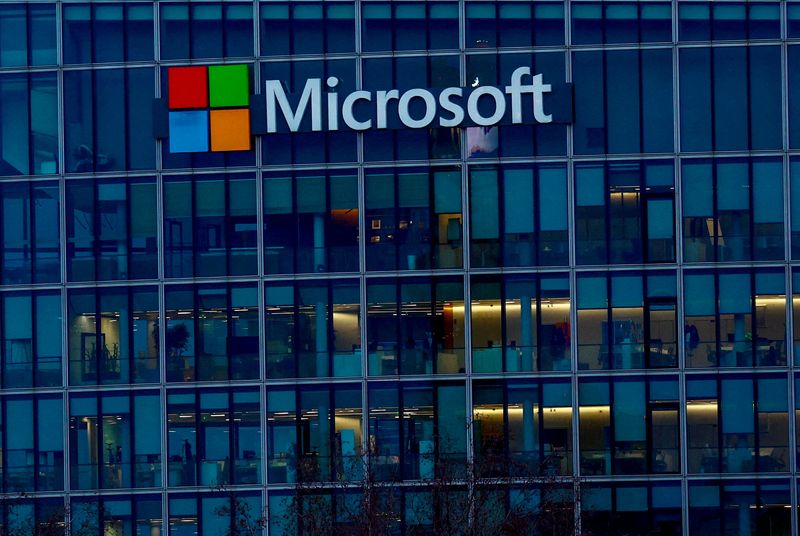
By Lucy Raitano
LONDON (Reuters) - Corporate dividends globally hit an all-time high of $1.66 trillion in 2023, with record payouts by banks making up half of the growth, a report showed on Wednesday.
On a worldwide basis, 86% of listed companies either increased dividends or maintained them, according to the quarterly Janus Henderson Global Dividend Index (JHGDI) report, which also forecast that dividend payouts would hit a new record of $1.72 trillion this year.
The world's biggest dividend payers in 2023 were Microsoft (NASDAQ:MSFT), followed by Apple (NASDAQ:AAPL) and Exxon Mobil (NYSE:XOM).
The total value of corporate dividends rose from $1.57 trillion in 2022 with underlying growth - which accounts for currency movements, special dividends, timing changes and index changes - of 5% from 2022, UK asset manager Janus Henderson said.
"Corporate cash flow in most sectors remained strong and this provided plenty of firepower for dividends and share buybacks," said Ben Lofthouse, head of global equity income at Janus Henderson.
According to LSEG data, earnings growth for the S&P 500 in the fourth quarter of 2023 was expected to come in at 9% year-on-year.
High interest rates have boosted bank margins and banks paid out a record $220 billion to shareholders in 2023, an underlying rise of 15% from 2022 and continuing a rebound after bank payouts were frozen during the pandemic.
Any positive impact from higher banking dividends was almost entirely offset by cuts from the mining sector, the report found, as lower commodity prices weighed on mining profits.
Hefty dividend cuts by five prominent companies - miners BHP and Rio Tinto (NYSE:RIO) as well as Petrobras, Intel (NASDAQ:INTC) and AT&T (NYSE:T) - reduced the underlying 2023 global dividend growth rate by 2 percentage points.
"Beyond these two sectors (banking and mining), whose impact was unusually large, we saw encouraging growth from industries as varied as vehicles, utilities, software, food and engineering, demonstrating the importance of a diversified portfolio," the report said.
On a geographical basis, Europe (excluding the UK), was a key growth driver, contributing two-fifths of the global increase as payouts rose 10.4% on an underlying basis to $300.7 billion.
Japan was also a major contributor, though it was somewhat tempered by a weak yen, the report said.
While the United States made the most significant contribution to global dividend growth due to its size, a 5.1% growth rate was in line with the global average.
Emerging markets dividends were flat on an underlying basis, with Janus Henderson highlighting steep cuts in Brazil and lacklustre growth in China.
Janus Henderson sees another 5% growth in corporate dividends this year to $1.72 trillion.
Even though the rapid increase in bank dividends is likely to slow, rapid declines from the mining sector might also be less impactful, said Lofthouse.
"Energy prices remain firm so oil dividends look well supported and the big defensive sectors like healthcare, food and basic consumer goods should continue to make steady progress."
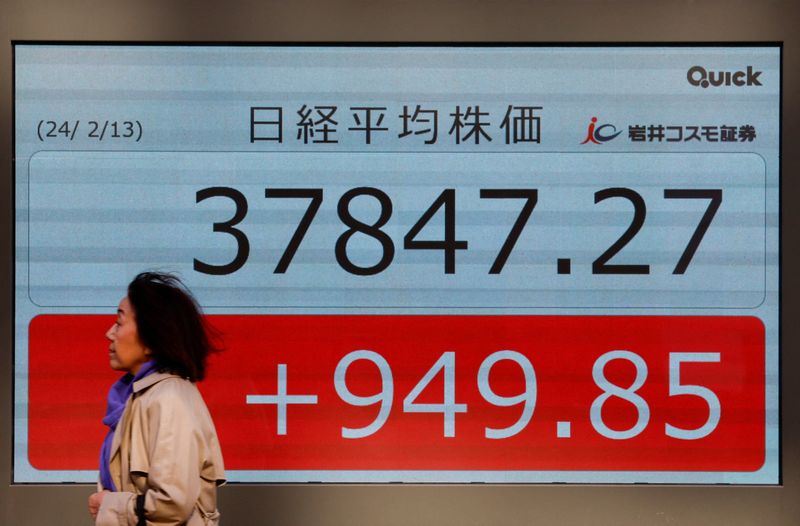
By Ankur Banerjee
SINGAPORE (Reuters) -Asian equities rose on Tuesday led higher by Chinese tech firms although investors' main focus was on key U.S. inflation data, while expectations that the Bank of Japan may be ready to exit ultra-easy policy as soon as next week weighed on the Nikkei.
Gold held just below its record peak and the dollar was steady as traders awaited the U.S. consumer price index later in the day to gauge when the Federal Reserve would likely start its rate cutting cycle.
European bourses are set for a strong open, with the Eurostoxx 50 futures up 0.57%, German DAX futures up 0.57% and FTSE futures 0.74% higher.
The spotlight during Asian hours was firmly on Japan after the BOJ refrained from purchasing Japanese exchange-traded funds on Monday even as local shares dropped sharply, stoking speculation a shift away from ultra-loose monetary policy is right around the corner.
A growing number of BOJ policymakers are warming to the idea of ending negative interest rates this month, four sources familiar with the central bank's thinking told Reuters last week.
The changing expectations have helped the yen perk up over the past week and sent the Nikkei beyond the record peak struck last week.
But on Tuesday, the Nikkei closed 0.06% lower, having dropped 1% during the session, while the yen weakened 0.41% to 147.51 per dollar after Bank of Japan Governor Kazuo Ueda hedged his optimism about the economy ahead of the central bank's policy meeting next week.
Futures now imply a 47% chance the BOJ will shift rates to zero at its meeting on March 18-19, though some still think it might wait until its April 26 meeting.
"The question for investors is whether the BOJ will stop at ending negative rates, or start a tightening cycle. We think the former," Frank Benzimra, head of Asia equity strategy at SocGen told the Reuters Global Markets Forum.
Elsewhere, Chinese stocks rose, with Hong Kong's Hang Seng Index up 2.6% led by the tech sector, while the blue-chip CSI300 index inched up 0.23%.
MSCI's broadest index of Asia-Pacific shares outside Japan rose 0.8% to its highest in more than seven months.
INFLATION WATCH
Investor focus will switch to U.S. inflation data due later on Tuesday, with expectations for a monthly increase of 0.4% and 3.1% on an annual basis. Core consumer prices are seen rising 0.3%, which would nudge the annual pace down to 3.7%.
Vasu Menon, managing director of investment strategy at OCBC Bank in Singapore, said if the data comes in higher-than-expected, that could worry investors, but such concerns may be short-lived.
"Markets have come to realise that the path ahead for inflation will be uneven, and higher-than-expected data for one or two months may not alter the medium-term outlook for inflation which is in a broad downtrend."
Market are all but certain that the U.S. central bank will not cut rates when it meets next week but have priced in more than a 70% chance of a rate cut in June, CME FedWatch Tool showed. Traders are pricing in 90 basis points of cuts this year.
Nicholas Chia, Asia macro strategist at Standard Chartered (OTC:SCBFF), said a "soft-ish inflation report" should give markets some relief, sealing the debate over further Fed hikes on concerns of a re-acceleration in price pressures.
"A Fed adamant on cutting rates in the coming months to dial back policy restriction should also provide another leg-up to the risk rally."
A stronger majority of economists in the latest Reuters poll also expect the Fed to start cutting rates in June. The survey showed respondents saw it more likely that if Fed policymakers changed their rate projections at the March meeting, the median view would signal fewer cuts this year, not more.
The yield on 10-year Treasury notes eased a bit to 4.094%, while the dollar index, which measures the U.S. currency against six rivals, was little changed at 102.82, having hit a roughly two-month low of 102.33 last week. [FRX/]
Spot gold eased a bit to $2,175.79 an ounce, but was not far from the record high of $2,194.99 it touched last week. [GOL/]

By Jihoon Lee and Cynthia Kim
SEJONG, South Korea (Reuters) - South Korea won't see a repeat of the sharp home price gains it did in the past as its population rapidly ages and economy slows, the country's land minister said, vowing to promote public rental accommodation to improve access to housing.
"The population is ageing and the economy is growing by just 2% to 3% each year. There is no way house prices will rise as they did in the past," Park Sang-woo, minister of land, infrastructure and transport, said in an interview with Reuters on Monday.
"In the past, the economy grew by 7% to 10% every year, and there were two or three kids in each family. There will never be a 'deja-vu' of that for this generation."
South Korea's median house prices hit a peak in June 2021 after rising 45% over five years, according to Korea Real Estate Board data. It has since fallen 19% following an aggressive interest rate cycle by the central bank.
Still, South Koreans cite high housing costs as the biggest reason behind nose-diving births and marriages. The country's fertility rate, already the world's lowest, hit a fresh record low in 2023.
According to the ministry's annual survey, house prices in 2022 were 6.3 times higher than households' annual income, easing slightly from 6.7 in 2021. In the capital Seoul, however, the price-to-income ratio was 15.2, up from 14.1 a year earlier.
The government is working to provide a more affordable housing.
This year, it has rolled out cheap mortgages for newly weds who plan to have a baby. To restore work-life-balance in the wider Seoul area where 45% of population live, the government plans a high-speed underground rail network to connect less expensive housing markets in outskirts of Seoul to jobs in the city's centre.
At the same time, the government will provide a greater range of long-term public rental homes through the corporate sector by easing regulations.
It will also help young people invest in assets other than real estate, he said.
With real estate demand still weak, Park said he shared the views of financial authorities that unprofitable property projects needed to be restructured.
Last December, Taeyoung Engineering & Construction, a mid-sized South Korean builder, rescheduled its debt, fanning concerns about debt repayment troubles in the sector.
"The structure of real estate project financing, which had worked just fine, is now being shaken by slowing demand and rising input costs," Park said. "We are making various efforts to stop that."

By Simon Lewis and Humeyra Pamuk
WASHINGTON (Reuters) - The United States must employ "all the tools at our disposal" to outcompete China, a top U.S. State Department official said on Monday, as the Biden administration unveiled its budget request for the 2025 fiscal year.
The request includes $4 billion over five years in mandatory funding for this purpose, including $2 billion to create a new international infrastructure fund to provide a credible, reliable alternative to Chinese infrastructure funding, Deputy Secretary of State for Management and Resources Rich Verma told a news briefing.
The other $2 billion was earmarked for "game-changing investments" to help Indo-Pacific countries push back against "predatory efforts," he said, adding that those would include efforts to improve governance and the rule of law.
The State Department requested a separate $4 billion in discretionary funding to cover foreign assistance and diplomatic engagement in the region.
U.S. efforts to fund infrastructure in developing countries have long been dwarfed by China's massive Belt and Road Initiative, a 10-year-old project to build infrastructure and energy networks connecting Asia with Africa and Europe through overland and maritime routes.
According to a report by U.S. researchers last November, Chinese financial institutions lent $1.34 trillion to developing countries from 2000 to 2021.
"We must employ all the tools at our disposal to outcompete China, wherever possible," Verma said, also referring to China by the initials of its official name, the People's Republic of China (PRC).
He said the request for fiscal 2025 would allow the U.S. "to continue to invest in the foundations of our strength at home, align with like-minded partners to strengthen our shared interests and address the challenges posed by the PRC, and harness those assets to compete with the PRC and defend our interests."
Verma said the infrastructure fund would support "transformative, quality and sustainable hard infrastructure projects."
At the 2023 G20 Summit in India, U.S. officials said President Joe Biden and Indian Prime Minister Narendra Modi co-hosted a group of G20 leaders to accelerate investments in high-quality infrastructure projects and development of economic corridors through a Partnership for Global Infrastructure and Investment (PGI).
This came after the Group of Seven rich Western countries leaders pledged in 2022 to raise $600 billion in private and public funds over five years to finance needed infrastructure in developing countries and counter the Belt and Road project.
Overseas finance has won Beijing friends across the developing world, while drawing criticism from the West and in some recipient countries, including Sri Lanka and Zambia, that infrastructure projects it funded saddled them with debt they were unable to repay.
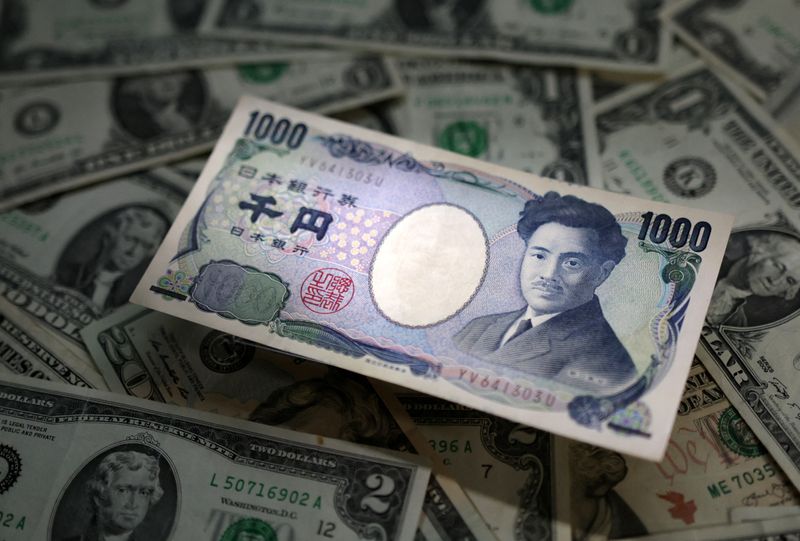
By Gertrude Chavez-Dreyfuss
NEW YORK (Reuters) - The yen drifted higher against the U.S. dollar for a fourth straight session on Monday, bolstered by an upward revision to Japan's growth figures and expectations the Bank of Japan could exit negative rates at its policy meeting next week.
In cryptocurrencies, bitcoin soared to a fresh record high above $72,000 underpinned by a surge in inflows into new spot exchange-traded funds for the digital asset. Hopes that the Federal Reserve will soon cut interest rates have also lifted bitcoin, which was last up 5.3% at $72,033 .
The market though remains focused on the yen and BOJ.
In afternoon trading, the dollar was at 146.94 yen, down 0.1% on the day.
A growing number of BOJ policymakers are warming to the idea of ending negative rates at their March 18-19 meeting, sources told Reuters, amid expectations for hefty pay rises from Japan's biggest firms. Results of this year's annual "shunto" wage negotiations are due on Wednesday.
At the same time, an upward revision to Japan's economic growth last quarter meant the country avoided a technical recession, adding to the argument the economy could weather tighter policy.
"We have gone from focusing on the April meeting for the BOJ to make a rate move to March. But I prefer a policy move in April right now," said Amo Sahota, executive director at FX consulting firm Klarity FX in San Francisco.
"They have been slow to act all this time, so what's the hurry now all of a sudden. We had the GDP revision but there's nothing there that says Japan is about to go explosive in growth and prices that they need to come in really hard right now. I think they have little more capacity to wait."
The dollar index rose 0.2% to 102.85, not far from the nearly two-month low of 102.33 reached on Friday when monthly payrolls figures signalled a cooling U.S. labor market, keeping the Fed on track to ease policy this year. The data did show downward revisions to January's blowout number.
"(Fed Chair Jerome) Powell has said time and time again that the Fed has been looking for softening in the labor market, and it appears Friday's release - though on the surface quite hot - might have shown the cracks necessary to move the needle earlier," said Helen Given, FX trader, at Monex USA in Washington.
Traders currently see June as most likely for the first cut, bets that could be moved by important consumer price index inflation data on Tuesday.
The euro slipped 0.1% to $1.0924 after jumping as high as $1.0980 on Friday for the first time since Jan. 12. The European Central Bank left rates at record highs last Thursday while cautiously laying the ground to lower them later this year.
Sterling dropped 1.1% against the dollar to $1.2807, after pushing to the highest since late July at $1.2890 on Friday amid bets the Bank of England will be slower to cut rates than the Fed or ECB. The British currency faces a test on Tuesday with the release of jobs and wage data.
Investors will be focused on Tuesday's consumer prices index (CPI) report, with the market forecasting headline CPI for February to rise 0.4%, from 0.3% in January, according to a Reuters poll.
Core CPI, on the other hand, is seen at 0.3%, down from 0.4% in January. The year-on-year core CPI, however, is expected to have slipped to 3.7% in February, from 3.9% in the previous month.
"When you look at CPI, you're really thinking about (Fed Chair Jerome) Powell's comments that they just need a little more evidence," said Klarity FX's Sahota. "And even if that evidence is showing that inflation is the same as it has been, then that's good enough for them to feel better conviction that they want to take rates lower."
The Australian dollar was down 0.2% at US$0.6610 after jumping last week as the U.S. dollar fell on the back of the slowdown in the labor market.
(This story has been refiled to add the analyst's name in paragraph 16)
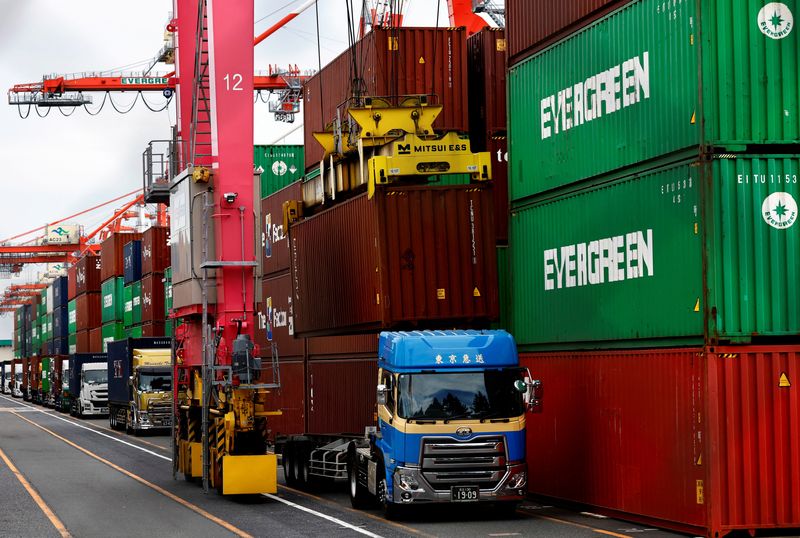
By Chuck Mikolajczak
NEW YORK (Reuters) -A gauge of global stocks retreated for a second straight session on Monday, easing further from a record high ahead of U.S. inflation data this week which could heavily influence the Federal Reserve's interest rate path.
Stocks have hit multiple record highs this year, but declined on Friday following a mixed U.S. payrolls report that did little to alter expectations for the Fed to begin cutting rates in June.
U.S. inflation data is due on Tuesday in the form of the consumer price index (CPI), with expectations for a monthly increase of 0.4% and 3.1% on an annual basis.
The Dow Jones Industrial Average rose 46.97 points, or 0.12%, to 38,769.66. The S&P 500 lost 5.74 points, or 0.11%, at 5,117.95 and the Nasdaq Composite fell 65.84 points, or 0.41%, to 16,019.27.
"There are two ways stocks can get hit here - in the very, very near-term you can get an upside surprise to CPI and you get further inversion of the yield curve and that just kind of punts the eventual reckoning down the street a few blocks," said Brian Nick, senior investment strategist at The Macro Institute in New York.
"But what we're more concerned about is that there's emerging weakness in a lot of the current activity."
U.S. Treasury yields edged up ahead of the data, with the benchmark U.S. 10-year notes up 1 basis point at 4.098%, from 4.088% late on Friday. The 2-year note yield, which typically moves in step with interest rate expectations, rose 5 basis points to 4.536%.
The Fed is scheduled to release its next policy statement on March 20 and investors have all but ruled out a cut, with expectations at 97% the Fed will hold rates steady, according to CME's FedWatch Tool.
Last week, comments from Fed Chair Jerome Powell and European Central Bank policymakers buoyed expectations that rate cuts will begin this summer. Expectations for a cut of at least 25 basis points (bps) at the June meeting are currently above 70%.
MSCI's gauge of stocks across the globe fell 2.55 points, or 0.33%, to 768.75.
The STOXX 600 index closed down 0.35%, while Europe's broad FTSEurofirst 300 index ended down 6.47 points, or 0.32%, weighed down by technology sector declines.
The dollar index gained 0.17% at 102.85, with the euro down 0.12% at $1.0924. Sterling weakened 0.37% at $1.281.
The Japanese yen strengthened 0.09% against the greenback at 146.94 per dollar. The yen had strengthened earlier in the day after Reuters reported a growing number of Bank of Japan policymakers are warming to the idea of ending negative interest rates this month.
In addition, data released on Monday showed Japan was not in recession after economic growth was revised up to an annualized 0.4% for the December quarter.
Crude prices were mixed, as U.S. crude settled down 0.1% at $77.93 a barrel and Brent settled at $82.21 per barrel, up 0.16% to on the day as concerns eased that fighting in the Middle East would disrupt supply and Chinese data suggested weak demand, while an increase in U.S. refining limited any selling.
In cryptocurrencies, bitcoin gained 5.37% at $72,090.50 after hitting a record $72,901.94.

(Reuters) -Bitcoin is back in the headlines, having roared to a new record high, just as many of the world's major central banks are starting to pave the way towards cutting interest rates, but only if inflation behaves.
Investment flows into cryptocurrencies, inflation numbers from the United States, China and the UK, as well as a potentially market-moving snap election in Portugal will all be under the microscope in the coming week.
Here is your week-ahead look at global markets from Lewis Krauskopf in New York, Li Gu in Shanghai and Dhara Ranasinghe, Elizabeth Howcroft and Amanda Cooper in London.
1/ BOOMING BITCOIN
Bitcoin has hit a new all-time high above $70,000, bringing it back above where it was in November 2021, when rates were low and "blockchain" and "Web3" were all the rage.
That 2021 boom was followed by a "crypto winter" fraught with bankruptcies and collapses at the biggest crypto firms that left millions out of pocket. Various crypto executives were hit with criminal charges and regulators stepped up their warnings about the risks.
But this does not seem to have deterred a new wave of money from coming in. No one knows for sure what's driving the gains, although analysts point to the billions of dollars that have flowed into U.S. spot bitcoin ETFs that launched this year.
Crypto fans say the industry has matured, but central bankers and regulators are still wary. Now investors are wondering: how much bigger can it get and is it different this time?
2/ EYE ON CPI
Tuesday's U.S. inflation report could help answer one of the key questions hovering over markets -- when can the Federal Reserve start cutting interest rates?
The consumer price index for February is expected to rise 0.4%, after January's CPI rose at a faster-than-expected 0.3%.
Investors have dialled back expectations for the number of interest rate cuts in 2024 amid lingering concerns about strength in the economy reigniting inflation. Fed Chair Jerome Powell told Congress in recent days that rate reductions will still "likely be appropriate" later this year, if officials gain more confidence in the steady decline of inflation.
With the fourth-quarter corporate earnings season ending, economic and inflation data is front and centre ahead of the Fed's next meeting later in March.
3/ OPENING DAY DISAPPOINTMENT
Investors weren't throwing any parties after the opening of China's week-long National People's Congress, as Beijing announced a stable and as-expected 5% growth target for 2024, but didn't break down what stimulus it would deploy to get the economy up and dancing.
The ailing property sector may be getting worse instead of better, with bonds in state-backed developer Vanke having sold off sharply. New home prices could fall further this year as support measures so far have had little impact, with the latest data due on March 15.
There is potentially room to loosen monetary policy, because although Chinese interest rates are already low compared with the U.S., the deflationary environment means real rates could come down. Weekend data showed price pressures in China picked up more than expected in February, but investors are still wary about deflation.
4/ PAY DAY
Britain's economy has narrowly avoided recession, as business activity is expanding at a healthy clip and consumers hit the shops in earnest - even with interest rates at 16-year highs and persistent inflation.
The Bank of England is less concerned about growth and far more focussed on inflation. The jobs market is showing signs of moderating. Vacancies fell for the 19th time in a row in the three months to January. But businesses are still struggling to find and retain staff. High levels of long-term sickness are also hampering employers.
Average regular pay - key for the BoE - decelerated to a rate of 6.2% in December, the slowest pace of growth in over a year, but not slow enough to convince policymakers rates will need to fall sooner rather than later. Data on March 12 might shift that thinking.
5/ PORTUGAL VOTES
Portugal's centre-right Democratic Alliance (AD) won Sunday's election, but its leader Luis Montenegro said it was unclear if he could govern without the support from far-right Chega, with whom he has refused to negotiate.
Chega's position in parliament more than quadrupled to at least 48 lawmakers in the 230-seat legislature, giving the combined right a majority.
Markets have largely ignored political uncertainty, with the election not expected to change the downward trajectory of debt.
The premium investors demand to hold Portuguese bonds over top-rated Germany is around 65 bps and near its tightest level in two years.
Ratings agency S&P Global just raised Portugal's rating to "A-" from "BBB+", citing an improved debt outlook.
But the election underscores a political tilt to the far right across Europe. With EU elections in June, the rise of right-wing populism is one to watch.

By Satoshi Sugiyama
TOKYO (Reuters) -Japan's economy avoided a technical recession, revised government data showed on Monday, even though the upward change in the fourth quarter was weaker than expected and highlighted concerns about the sluggish economic recovery.
Japan's revised gross domestic product (GDP) expanded at an annualised clip of 0.4% in the October-December period from the previous quarter, better than the initial estimate for a 0.4% contraction, according to the Cabinet Office.
It was, however, below economists' median forecast for a 1.1% uptick in a Reuters poll.
On a quarter-on-quarter basis, GDP grew 0.1%, compared with the initial reading of a drop of 0.1.% drop and a median forecast for a 0.3% rise.
"The headline is an upward revision, but domestic demand is remains lacklustre, particularly in consumption," said Saisuke Sakai, senior economist at Mizuho Research and Technologies.
The upward revision came amid growing market expectations the Bank of Japan could ditch its negative interest rates as early as this month, fuelled in part by board members' recent hawkish comments that Japan was moving towards the central bank's 2% inflation target.
Capital expenditure, which increased 2.0% quarter-on-quarter, anchored the upward revision. It was better than better than the preliminary 0.1% decrease but still below a median market forecast of a 2.5% rise.
Private consumption, which makes up about 60% of Japan's economy, fell 0.3% in October-December, slightly worse than the 0.2% drop in the initial estimate. Seafood and household appliances contributed to downward pressure in the category, a Cabinet Office official said.
External demand contributed 0.2 percentage points to real GDP, unchanged from the preliminary reading.
In the current January-March quarter, the Japanese economy could suffer contraction after factoring in slowdown in the Chinese economy, production halt at a unit of Toyota Motor (NYSE:TM) Corp and weak consumption, Sakai said.
LOOMING BOJ DECISION
Despite the pockets of weakness shown in the data, the BOJ will likely abandon the negative interest rates by next month citing a growing prospect of hefty pay hikes at annual wage talks with labour unions, said Marcel Thieliant, head of Asia-Pacific at Capital Economics.
"The Bank of Japan tends to put more emphasis on its own consumption activity index and doesn't seem to be particularly concerned about the recent sluggishness in activity," Thieliant said.
The BOJ is scheduled to hold a two-day policy-setting meeting on March 18-19.
Japan's largest trade union confederation, Rengo, has demanded pay rises of 5.85% this year, topping 5% for the first time in 30 years.
The Japanese central bank has long contended that robust wage growth was a prerequisite for rolling back more than a decade of a radical monetary experiment.
Japan last week saw inflation-adjusted real wages in January shrinking for the 22nd month in a row, while year-on-year household spending in the same month marked the biggest drop in 35 months.

By Yousef Saba and Maha El Dahan
DUBAI (Reuters) -Saudi Arabia's state-owned oil giant Aramco (TADAWUL:2222) boosted its dividend despite net profit falling 24.7% to $121.3 billion in 2023 on lower oil prices and volumes, showing the state's continued reliance on oil revenue as it seeks to diversify.
The profit, down from $161.1 billion in 2022, was still the company's second-highest on record, Aramco said on Sunday as it reported total dividends for the year of $97.8 billion, up 30%. Oil revenues made up 62% of total state revenues last year.
The Saudi government, which directly holds about 82.2% of Aramco, relies heavily on the oil giant's generous payouts, which also include royalties and taxes. The world's top oil exporter is spending billions of dollars trying to diversify its economy and find alternative sources of wealth having relied on oil for decades.
"Our balance sheet remains strong, even after our significant growth programme and dividend payouts," Chief Executive Amin Nasser said.
Nasser expects global oil demand for 2024 at 104 million barrels a day, up from an average of 102.4 million barrels in 2023.
The state's ambitious economic agenda, known as Vision 2030, is spearheaded by the sovereign Public Investment Fund, which owns 16% of Aramco, after a fresh transfer by the government of 8% to companies PIF owns last week.
Aramco declared a base dividend, paid regardless of results, of $20.3 billion for the fourth quarter. It expects to pay out $43.1 billion in performance-linked dividends this year, including $10.8 billion to be paid out in the first quarter.
The base dividend was increased 4% year on year, and the performance-linked dividend was about 9% higher.
The company said capital investments were at $49.7 billion in 2023, up from $38.8 billion in 2022. It forecast capital investments between $48 billion and $58 billion this year, growing until the middle of the decade.
That range is wide because for external investments, "there's an element of timing that we don't fully control," Chief Financial Officer Ziad Al-Murshed said on a media call.
The Saudi government in late January ordered Aramco to scrap its expansion plan to boost production capacity to 13 million barrels a day (mbpd), returning to the previous 12 mbpd target.
The capacity decision "is expected to reduce capital investment by approximately $40 billion between 2024 and 2028," Aramco said.
Most of the savings are expected in the latter years, so how it will be spent will be decided as opportunities arise, Al-Murshed said. Priorities for using the extra cash include sustaining capex, the base dividend, growth capex, additional distributions and further deleveraging, he added.
Free cash flow fell to $101.2 billion in 2023 from $148.5 billion in 2022.
Upstream investments including gas will be almost 60% of capex in 2024-2026, including external investments, Chief Executive Amin Nasser said. Downstream will be around 30% and "new energies" around 10%.
"As we go beyond that, over the next 10 years, upstream will be around 50%, downstream is around 35% and new energies around 15%," Nasser said.
Investing in gas will help free up more oil for export, as well as produce more liquids associated with gas extraction, he said.
Aramco's shares were up about 1.7% to 32.3 riyals a share, slightly above their 2019 IPO price of 32 riyals. Sources told Reuters last month that Saudi Arabia is poised to sell more shares of Aramco.
"That's a question for the government," Al-Murshed said on whether more government-owned shares would be sold.
($1 = 3.7505 riyals)

